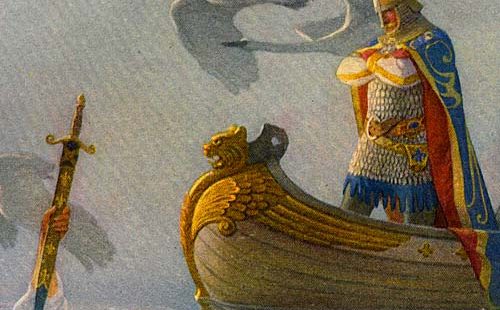Camelot
Camelot is the castle and court of Arthurian legend. It first appeared in a 12th-century romance by French writer Chretien de Troyes. Countless writers and artists have found a muse in the stories that take place in the realm of Camelot, such as Lord Alfred Tennyson in “Sir Lancelot and Queen Guinevere,” and Mark Twain in A Connecticut Yankee in King Arthur’s Court. Though Camelot is in ruins now if it ever existed, Arthurian legend is still told and retold today.






















